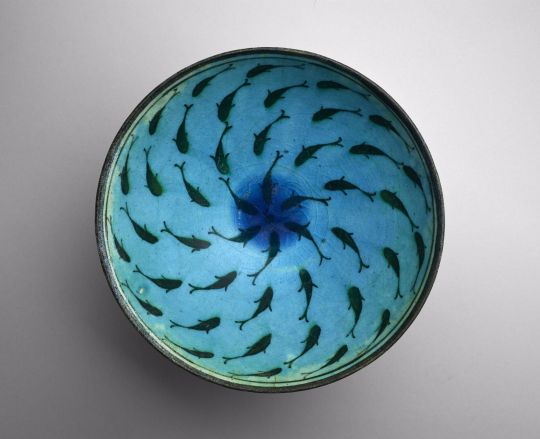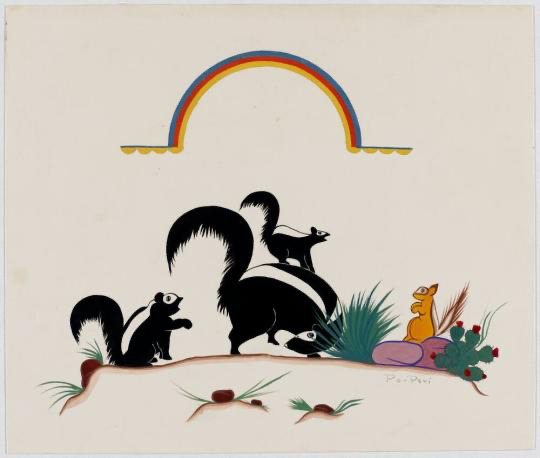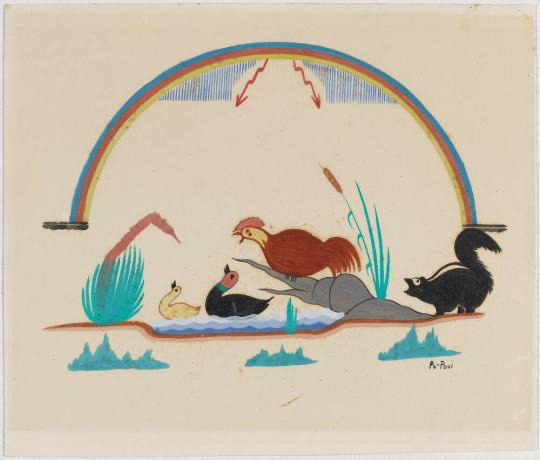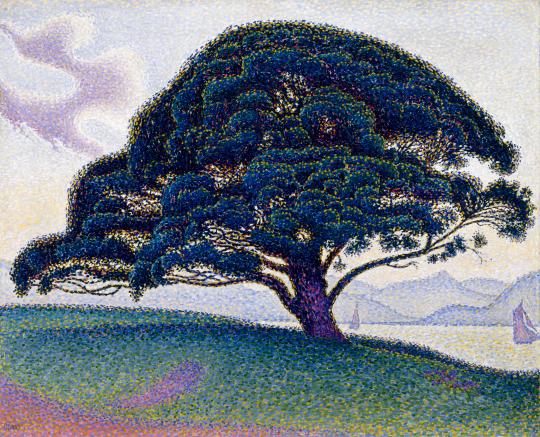#Houston Fine Arts
Explore tagged Tumblr posts
Text

Title: Night Angel Holding a Waning Moon Artist: William Morris (English, 1834-1896) Date: between 1857 and 1869 Genre: religious art Period: Victorian Movement: Pre-Raphaelite Brotherhood; Arts and Crafts Movement Medium: watercolor, ink, graphite, and collage on mold-made paper Dimensions: 34 cm (13.4 in) high x 8.6 cm (3.4 in) wide Location: Museum of Fine Arts, Houston, TX
#art#art history#William Morris#religious art#Christian art#angels#Pre-Raphaelite#Pre-Raphaelite Brotherhood#pre-raphaelisme#British art#English art#19th century art#Victorian period#Victorian art#watercolor#Museum of Fine Arts Houston#MFA Houston
3K notes
·
View notes
Link
Houston Opera Announces its 2023-2024 Season; Includes Favorite's and New Work #janetwalker #hautelifestylecom #theentertainmentzonecom #Houstonopera #houstonfinearts #opera
https://www.haute-lifestyle.com/arts-culture/fine-arts-dance-symphony/6255-houston-grand-opera-announces-its-2023-24-season.html
#janet walker#haute-lifestyle.com#The-Entertaiment-Zone.com#houston#Houston Fine Arts#houston opera#Houston Grand Opera
1 note
·
View note
Text

Noli Me Tangere (Touch Me Not)
Artist: Marcantonio Franceschini (Italian, 1648-1729)
Date: c. 1700
Medium: Oil on canvas
Collection: Museum of Fine Arts, Houston, Texas, United States
Description
‘Noli me Tangere’ depicts the biblical scene (John 20:17) where Mary Magdalene recognizes Christ after His Resurrection. Christ is comforting Mary Magdalene but also tells her not to touch him as he is soon to ascend to Heaven and she is not to be fixated on his earthly appearance. Noli me tangere is Latin for let no one to touch me.
#artwork#oil painting#italian art#marcantonio franceschini#maria magdalene#christianity#angel#jesus christ#oil on canvas#fine art#biblical scene#gospel of john#biblical art#italian culture#italian painting#museum of fine arts houston#european art
276 notes
·
View notes
Text

Bowl with Fish, Iran, probably Kashan (late 13th–mid-14th century AD).
Stone Paste, Painted in Black Under Turquoise Glaze,
7,9 x 18, 7 cm,
Image Credit: Museum of Fine Arts, Houston.
#art#history#design#style#archeology#iran#fish#turquoise#bowl#artifacts#archeologie#glaze#kashan#13th century#14th century#museum of fine arts#houston#circle
517 notes
·
View notes
Text

Allegory of Peace
Artist: Arent de Gelder (Dutch, 1645–1727)
Date: 1685
Medium: Oil on canvas
Collection: Museum of Fine Arts, Houston, Texas, United States
#allegorical art#allegory of peace#female figure#artwork#oil on canvas#fine art#woman#oil painting#allegorical figure#basket#fruit#gold#luxurious costume#drapery#jewelry#gold embroidery#sheep#copper utensils#dutch culture#dutch art#arent de gelder#dutch painter#european art#17th century painting#museum of fine arts houston
30 notes
·
View notes
Text

Catfish Pendant. Greater Chiriqui or Coclé. Panama, 900-1500 CE.
Museum of Fine Arts Houston.

Goldweight Depicting a Catfish. Asante or related Akan-speaking peoples of Ghana. Coastal West Africa. 1700s-1900s CE.
The Art Institute of Chicago.
#the art institute of chicago#museum of fine arts Houston#museum#catfish#animals in art#sculpture#900s#1500s#archaeology#art#culture#history#indigenous history#african history
43 notes
·
View notes
Text

Orpheus Leading Eurydice from the Underworld (1861) by Jean-Baptiste-Camille Corot (1796-1875)
#orpheus leading eurydice from the underworld#orpheus#eurydice#greek mythology#jean baptiste camille corot#houston museum of fine arts
34 notes
·
View notes
Text

Jean-Bernard Restout (1732-1797) "Young Woman with a Guitar" (1768) Oil on canvas Located in the Museum of Fine arts, Houston, Texas, United States
#paintings#art#artwork#genre painting#female portrait#jean bernard restout#oil on canvas#fine art#museum of fine arts houston#museum#art gallery#french artist#portrait of a woman#guitar#music#musical instruments#instrument#green#pink#hair#aesthetic#aesthetics#1760s#mid 1700s#mid 18th century
98 notes
·
View notes
Text

The Return of Orestes
Artist: Anton von Maron (Austrian, 1733–1808)
Date: 1786, Italy
Medium: Oil on canvas
Collection: The Museum of Fine Arts, Houston, Texas, United States
#mythological art#greek mythology#the return of orestes#mythological scene#mythological characters#male figures#female figures#austrian culture#oil on canvas#fine art#oil painting#anton von maron#european art#austrian painter#museum of fine arts houston#18th century painting#artwork#austrian art
22 notes
·
View notes
Text
For #NationalSkunkDay here’s a trio of 1930s tempera paintings from Museum of Fine arts Houston by the San Ildefonso Pueblo’s Martinez family:

1. Popovi Da (Tony Martinez) (1921–71) Untitled (Skunks and Squirrels Under Sky Crescent) 1930s San Ildefonso Pueblo, New Mexico, United States Tempera on wove paper 9 5/16 × 11 1/16 in.

2. Popovi Da (Tony Martinez) Skunk, Ducks, Rooster 1930s San Ildefonso Pueblo, New Mexico, United States Tempera on paper board 9 9/16 × 11 1/4 in.

3. Julian Martinez (1885–1943) Untitled (Skunks and Chickens) 1930s San Ildefonso Pueblo, New Mexico, United States Tempera on paper board 10 × 11 1/16 in.
#animals in art#native american art#indigenous art#Museum of Fine Arts Houston#painting#works on paper#20th century art#1930s#National Skunk Day#skunk#animal holiday
310 notes
·
View notes
Text

The Bonaventure Pine, Paul Signac, 1893
#art#art history#Paul Signac#landscape#landscape painting#landscape art#Neo-Impressionism#Pointillism#France#French art#19th century art#oil on canvas#Museum of Fine Arts Houston#MFA Houston
2K notes
·
View notes
Text

Passing By
Artist: Ernest Martin Hennings (American, 1886–1956)
Culture: American
Date: c. 1924
Place: New Mexico, United States
Medium: Oil on canvas
Collection: Museum of Fine Arts, Houston, TX, United States of America
Description
As tightly woven as a fine tapestry, Passing By shows people of the Taos Pueblo moving through a glade of cottonwoods in the brilliant autumn sun of the Southwest. The figures and landscape are integrated as one.
Exhibited in the 1924 Venice Biennale and the winner of the gold medal in the 1926 exhibition at New York’s National Academy of Design, Passing By is among the finest paintings produced by Taos Society artist E. Martin Hennings. The Taos Society of Artists was the first art colony established west of the Mississippi River, its roots going back to 1898. Following the development of railroad travel and tourism in the Southwest, artists rushed there and embraced Pueblo culture and the dramatic colors and topography of the desert region.
Shimmering like a golden screen shot through with vivid notes of blue, this painting presents a dramatic backdrop of aspen trees against which three Taos Pueblo Indians pass by as if in a timeless procession. All three men are wrapped in woven blankets and wear silver adornment, long braids, and modern clothing. In Passing By, Hennings presents a solemn, dignified image of an enduring native culture.
#painting#taos pueblo#cottonwoods#new mexico#autumn#figures#landscape#horses#ernest martin hennings#american painting#american culture#20th century painting#museum of fine arts houston#native american#aspen trees#woven blankets#silver adornment#long braids#dignity#fine art#artwork
20 notes
·
View notes
Photo

Mother with Child, St. Luke’s Baptist Church, Moonshine Village by Keith Calhoun
#art#photography#Mother with Child St. Luke's Baptist Church Moonshine Village#Keith Calhoun#The Museum of Fine Arts Houston
341 notes
·
View notes
Photo

Dear Whitney
#gif#daxnorman#whitney houston#fine art#pink panther#time#artists on tumblr#pop art#surrealism#modern art#animation#cartoon remix#lp
217 notes
·
View notes
Text

Dragons of Karabakh by Faig Ahmed. Azerbaijani, 2021 CE.
Museum of Fine Arts Houston.
#Azerbaijani#Azerbaijan#faig ahmed#museum of fine arts Houston#art#culture#history#modern history#contemporary art#contemporary history#2020s
21 notes
·
View notes
Text






Book 541
Mark Catesby’s Natural History of America: The Watercolors from the Royal Library Windsor Castle
Henrietta McBurney
Merrill Holberton / The Museum of Fine Arts, Houston
From 1729 to 1749, Mark Catesby (1682-1749) labored on his life’s work, Natural History of Carolina, Florida and the Bahama Islands, better known as simply Natural History, the first comprehensive study of the flora and fauna of the Eastern seaboard of North America and the most important precursor to Audubon’s Birds of America. Published in this book for the first time are the original watercolors from which Catesby prepared the 220 etchings in Natural History. The watercolors, stored away from the light between the pages of a unique three-volume set of the book bought by King George III in 1768, are remarkably bright and fresh and display all the enthusiasm that Catesby brought to his subjects. Detailed, colorful, innovative, stately, and sometimes even whimsical, this is a book that breathes new light into Catesby’s remarkable work and talent.
#bookshelf#personal collection#personal library#books#library#bibliophile#book lover#illustrated book#booklr#natural history#botanical art#Mark Catesby’s Natural History of America#henrietta mcburney#merrill holberton#museum of fine arts Houston
3 notes
·
View notes